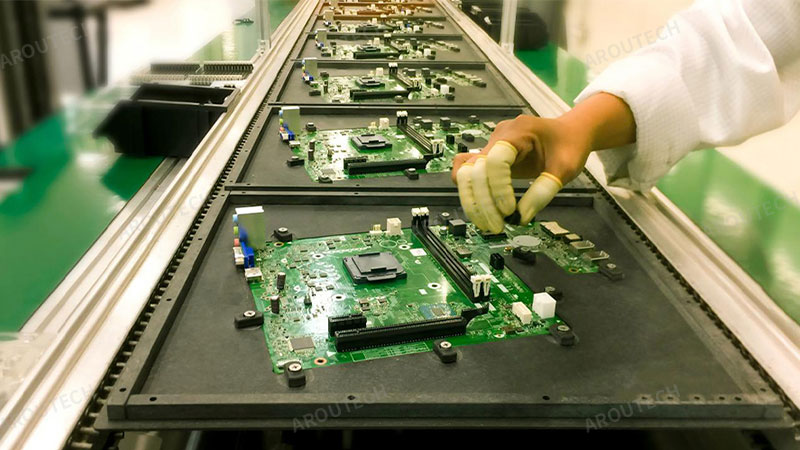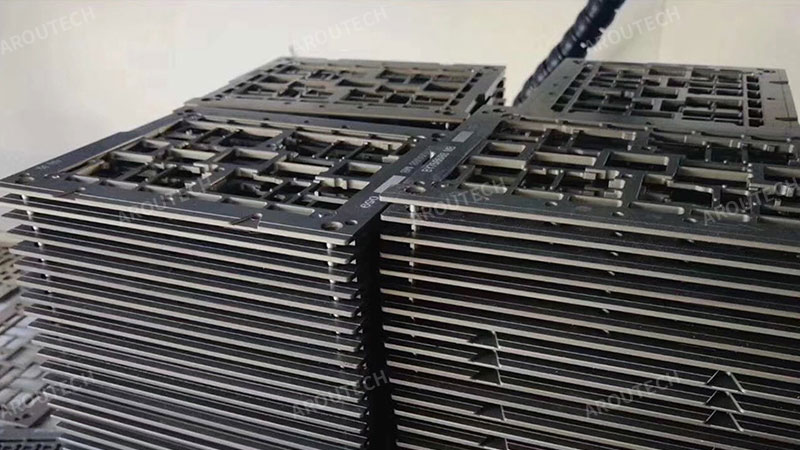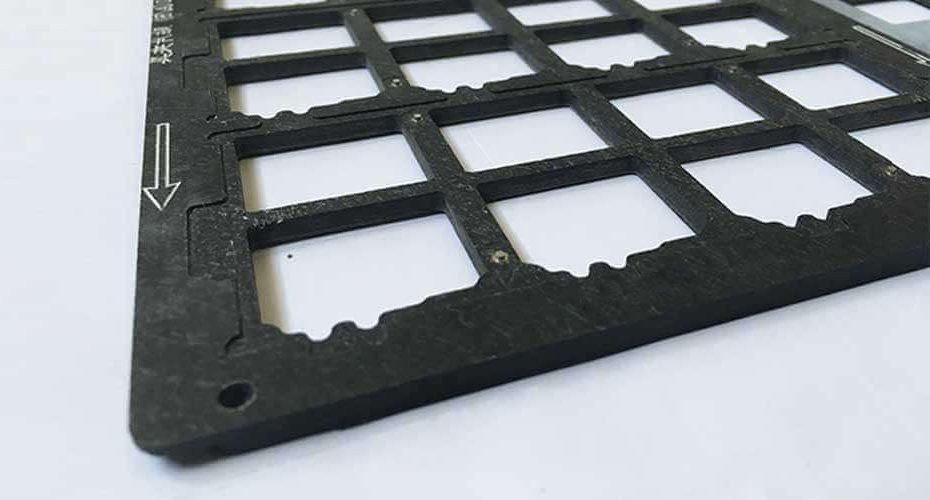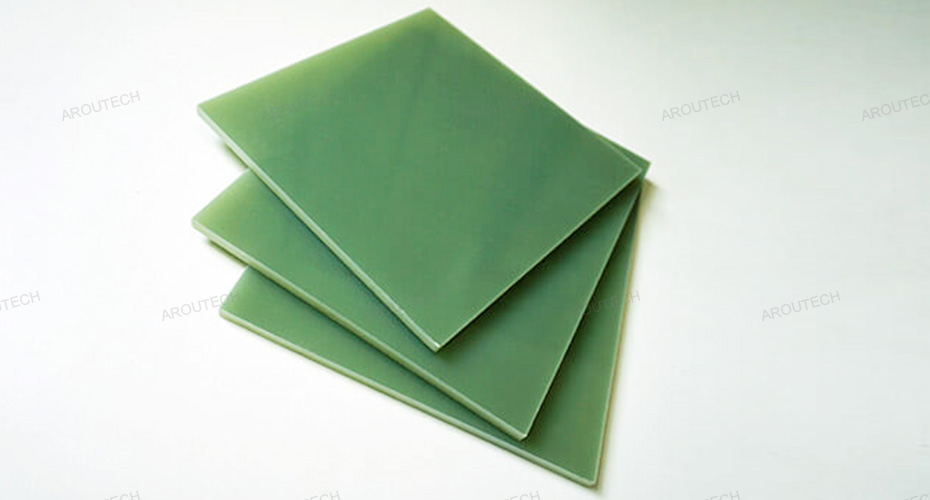Choosing the right material for your wave solder pallets can feel overwhelming, right? Picking the perfect one is crucial for smooth operations and top-notch product quality.
Wave soldering pallets are specialized fixtures that hold and protect Printed Circuit Boards (PCBs) during the wave soldering process, ensuring precise and efficient soldering by exposing only specific areas to the molten solder wave.
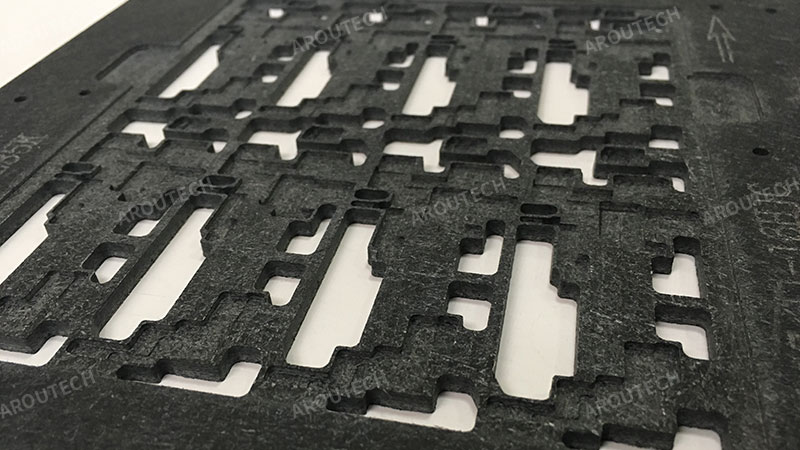
I remember when I first started in electronics manufacturing, the sheer number of material options for wave solder pallets seemed daunting. It quickly became clear that understanding these materials was not just about technical specifications; it was about ensuring the reliability and efficiency of our entire production line.
Making Sense of Wave Soldering
Have you ever wondered what exactly a wave soldering pallet does? These specialized fixtures are fundamental in electronics manufacturing, serving to hold and protect Printed Circuit Boards (PCBs) during the soldering process.
Wave soldering pallets are precision tools designed to secure PCBs, guide them through the molten solder wave, and shield sensitive components from excessive heat and unintended solder contact, thereby ensuring high-quality solder joints.
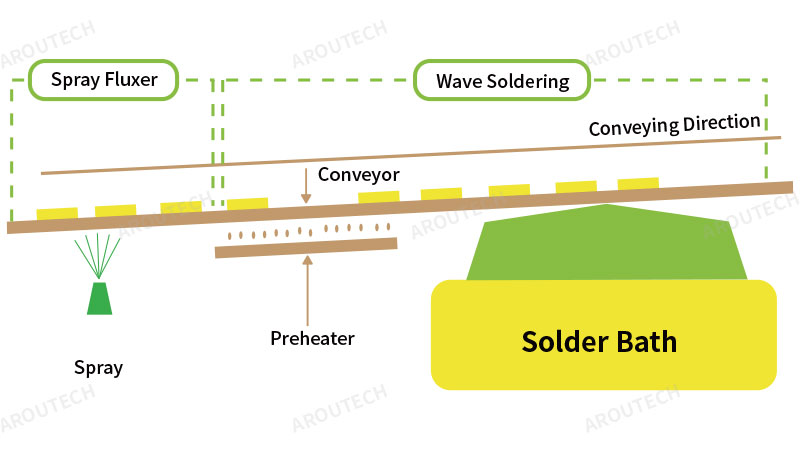
During the wave soldering process, a wave of liquid solder forms, and the bottom side of the PCB passes over it. The pallet ensures that only the designated areas of the board are exposed to this wave, which prevents any unintended soldering. These pallets are typically crafted from high-temperature resistant materials, as they must endure intense heat without degrading or deforming. Different materials offer varying levels of thermal and mechanical properties, which directly impact their performance and longevity. Beyond simply holding the PCB, wave soldering pallets perform several critical functions: they protect delicate components from the high temperatures of the solder wave, stabilize the PCBs to prevent movement during soldering, and enable precise application of solder to specific points. Using the correct pallet significantly improves solder quality and reduces defects in the final product. Proper design and material selection are therefore essential for optimal performance and to enhance the precision and reliability of the entire soldering process.
Why Does Material Choice Matter So Much in Wave Soldering?
Are you questioning why the material of your wave solder pallet is such a big deal? The choice of material for wave solder pallets is absolutely critical, as it directly impacts the quality and efficiency of the entire soldering process. Different materials offer distinct advantages and drawbacks, impacting the overall performance.
The material choice for wave solder pallets is crucial because it directly influences thermal resistance, chemical resistance to fluxes, mechanical strength, and overall cost-effectiveness, all of which are vital for maintaining soldering quality and pallet longevity.
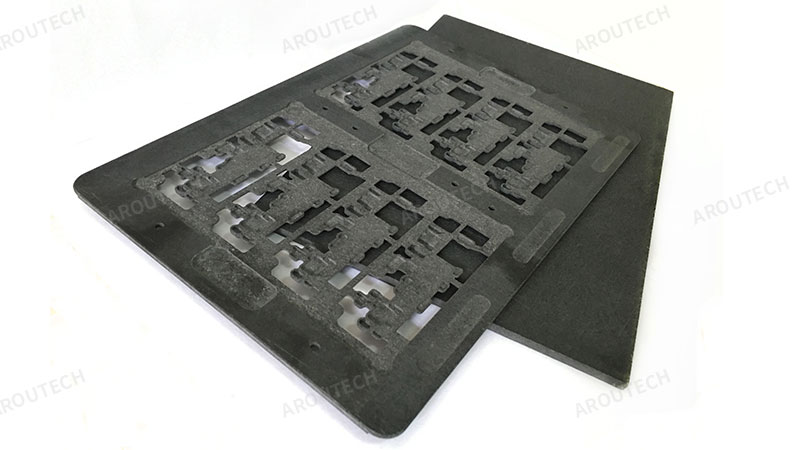
Thermal resistance is a primary factor. A pallet material must be able to withstand the high temperatures encountered during soldering without deforming or degrading. Without adequate thermal resistance, the pallet can warp, leading to misalignment and soldering issues. Chemical resistance is equally important, especially since some fluxes used in soldering are highly aggressive. A material’s ability to resist these chemicals ensures the pallet’s longevity and consistent performance over time. The right material choice can lead to fewer defects, extend the lifespan of the pallet, and provide better control over the soldering process. This can also reduce maintenance costs, contributing to a more cost-effective manufacturing operation. Ultimately, a deep understanding of material properties helps in making informed decisions, ensuring optimal results in wave soldering operations.
What Key Properties Define High-Quality Wave Solder Pallet Materials?
Have you ever wondered what makes a wave solder pallet material truly high-quality? High-quality wave solder pallet materials possess several essential properties that ensure optimal performance throughout the soldering process. Understanding these features is crucial for making informed material choices.
High-quality wave solder pallet materials are characterized by superior thermal stability to prevent warping, robust mechanical strength to resist damage, excellent chemical resistance against aggressive fluxes, and consistent dimensional stability for precision.
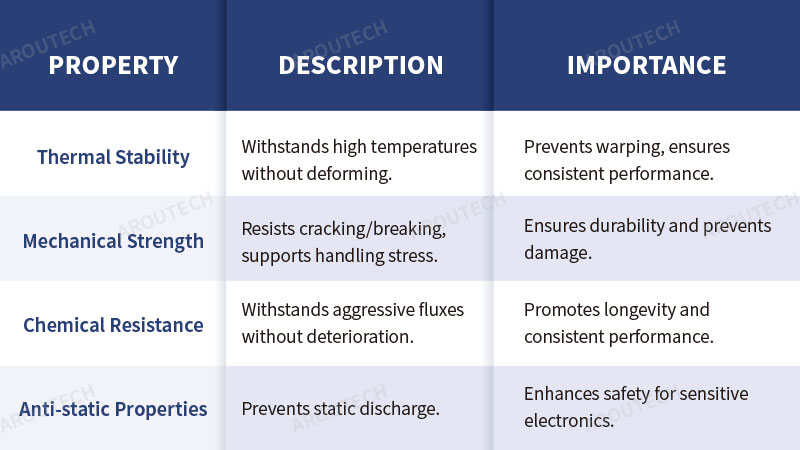
Thermal stability is paramount; a good pallet material must withstand repeated exposure to high temperatures without deforming, thus maintaining its dimensional integrity. Mechanical strength also plays a crucial role, as high-quality materials resist cracking and breaking, and can support the weight and stress of handling during the soldering process. Furthermore, chemical resistance is vital; pallet materials must withstand exposure to aggressive fluxes, which reduces the risk of deterioration and ensures longevity. In some manufacturing environments, anti-static properties can also be beneficial for sensitive electronics, making it important to select a material with such capabilities to enhance safety. By understanding these properties, manufacturers can select the best material, leading to high-quality and reliable manufacturing processes, and ultimately, superior electronic products.
Overview of Common Wave Solder Pallet Materials: Which One Fits?
Are you curious about the most common materials used for wave solder pallets? Wave soldering pallet materials must meet specific needs, and Durostone, Ricocel, and CDM are among the most frequently used options. Each material offers unique properties that benefit different soldering environments.
Durostone is known for high thermal resistance and mechanical strength, Ricocel for superior chemical resistance and dimensional stability, and CDM for its cost-effectiveness, making each suitable for distinct wave soldering applications.
Durostone is widely recognized for its exceptional thermal resistance, making it a reliable choice for high-temperature applications due to its durability and strength. Ricocel, on the other hand, excels in environments where aggressive fluxes are used, offering superb chemical resistance and dimensional stability that ensure longevity and consistent performance. CDM is valued primarily for its cost-effectiveness, providing satisfactory thermal properties for less demanding applications and striking a balance between performance and affordability. Each of these materials has its own strengths and weaknesses, and the key is to match the material properties with your specific manufacturing requirements. Making an informed choice can significantly improve manufacturing efficiency and product quality.
Durostone: Features, Benefits, and Applications – Is It Your Go-To?
Have you considered Durostone for your wave soldering needs? Durostone is renowned for its robustness, with its key feature being high thermal resistance, which makes it ideal for high-temperature applications.
Durostone offers exceptional thermal resistance and mechanical strength, making it highly durable and suitable for demanding, high-temperature wave soldering processes, including both leaded and lead-free applications.
This material is mechanically strong, capable of withstanding heavy use without warping, which helps maintain its integrity over time and reduces maintenance and replacement costs. Durostone is versatile and performs well in various industrial environments, including both leaded and lead-free soldering processes, which enhances its appeal in manufacturing. Its applications are extensive, particularly in PCB assembly, where this high-performance material contributes significantly to producing reliable electronics. Overall, Durostone offers durability and reliability, ensuring continuous manufacturing operations without interruptions, making it a wise investment for high-demand environments.
Ricocel: Features, Benefits, and Applications – Is It the Chemical Champion?
Are you looking for a material that can stand up to harsh chemicals? Ricocel is well-known for its resilience, with its primary advantage being superior chemical resistance, making it highly suitable for use with aggressive fluxes.
Ricocel is distinguished by its excellent chemical resistance and dimensional stability, making it ideal for environments with aggressive fluxes and ensuring consistent, reliable performance under challenging conditions.
This material maintains its shape even under stress, offering excellent dimensional stability that ensures consistent performance and reliability. Ricocel thrives in challenging settings, making it an excellent choice for environments with frequent chemical exposure, where its stability is unmatched. Its reliability and endurance have made it a preferred choice in electronics manufacturing, enhancing the efficiency and output of the soldering process. Ricocel ultimately supports long-term performance, proving to be a stable and reliable option for demanding manufacturing conditions, benefiting users with its dependability in critical tasks.
CDM: Features, Benefits, and Applications – The Cost-Effective Solution?
Is budget a primary concern for your wave soldering pallets? CDM is a material option that, while more affordable than Durostone and Ricocel, comes with certain trade-offs. It is valued for its relatively lower cost, making it a consideration for applications where extreme performance is not the top priority.
CDM offers a more budget-friendly alternative to Durostone and Ricocel, providing functional properties for less demanding wave soldering applications. However, its performance in areas like thermal resistance, chemical resistance, and mechanical strength is generally lower, and its limited market presence may raise reliability concerns for some users.
While CDM can perform adequately in moderate settings, its thermal properties are generally inferior to Durostone and Ricocel. It may not withstand the most aggressive fluxes as effectively as Ricocel, nor offer the same robust mechanical strength as Durostone. This makes it suitable for applications that do not involve extreme conditions or require the highest levels of durability. Due to its lower performance profile and more limited market penetration compared to established materials like Durostone and Ricocel, there might be some reliability concerns or less readily available long-term performance data. CDM is typically considered for less demanding PCB assemblies, appealing to operations seeking a more economical material solution, accepting that this comes with some compromises in performance and potential long-term reliability. Its practicality ensures its use in certain segments of electronics manufacturing where cost is a dominant factor, but users should be aware of its limitations and the potentially higher risk of issues compared to premium materials.
Betronic Wave Solder Pallet Materials: A Tailored Approach?
Have you considered how a specialized supplier can meet your unique wave solder pallet needs? Beyond the widely recognized materials like Durostone, Ricocel, and CDM, Aroutech offers a range of proprietary wave solder pallet materials designed to address specific manufacturing challenges and optimize performance. We understand that every production line has unique requirements, and a one-size-fits-all approach rarely yields the best results.
Aroutech provides a diverse portfolio of wave solder pallet materials, including advanced composites and custom formulations, engineered to offer superior thermal stability, chemical resistance, and mechanical integrity, tailored to diverse customer needs and demanding soldering environments.
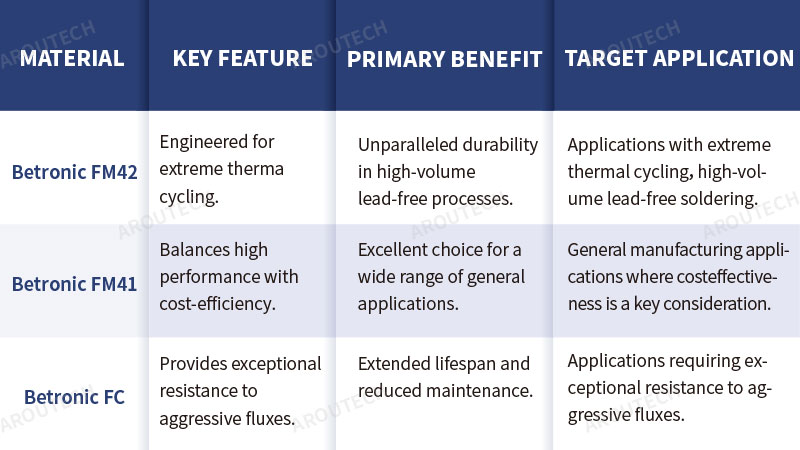
Aroutech have invested significantly in research and development to create materials that not only meet but often exceed industry standards for thermal and chemical resistance, as well as mechanical strength. For instance, Betronic FM42 is engineered for extreme thermal cycling, offering unparalleled durability in high-volume, lead-free processes. For applications requiring exceptional resistance to aggressive fluxes, Betronic FC provides extended lifespan and reduced maintenance. We also offer Betronic FM41, which balances high performance with cost-efficiency, making it an excellent choice for a wide range of general applications. Our approach involves close collaboration with clients to understand their specific process parameters, flux chemistries, and temperature profiles. This allows us to recommend, and if necessary, custom-formulate, a material solution that precisely fits their needs, ensuring optimal soldering quality, reduced defects, and maximized pallet longevity. We believe that the right material choice is a strategic investment that significantly impacts overall manufacturing efficiency and product reliability.
Comparison Table: Wave Solder Pallet Materials – A Quick Glance?
Do you need a quick way to compare wave solder pallet materials? Understanding the properties of wave solder pallet materials can greatly aid in making an informed selection. By comparing Durostone, Ricocel, CDM, and Betronic manufacturers can better align material characteristics with their specific needs and conditions. Each material offers unique advantages, from thermal resistance to chemical stability, making them suitable for different environments and soldering applications.
This comparison table provides a concise overview of Durostone, Ricocel, CDM, and Betronic, highlighting their thermal resistance, chemical resistance, mechanical strength, and cost-effectiveness to facilitate informed material selection for wave solder pallets.
To assist in this selection process, the following table summarizes the key attributes of each material:
| Material | Thermal Resistance | Chemical Resistance | Mechanical Strength | Cost-Effectiveness |
|---|---|---|---|---|
| Durostone | High | Moderate | High | Moderate |
| Ricocel | Moderate | High | High | Moderate |
| CDM | Moderate | Moderate | Moderate | High |
| BETRONIC FM | High | High | Moderate | Very High |
| BETRONIC FC | Moderate | High | High | Very High |
This table offers a quick overview to help in choosing the optimal material based on specific requirements. Selecting the right pallet material can enhance manufacturing efficiency and product quality while managing costs effectively.
How to Select the Right Wave Solder Pallet Material for Your Needs?
Are you wondering how to choose the perfect wave solder pallet material for your specific process? Choosing the right wave solder pallet material is crucial for optimizing your manufacturing process. This decision impacts not only the soldering quality but also the longevity of the pallets themselves. Several key factors should be carefully considered when making this choice.
To select the right wave solder pallet material, assess your process’s thermal and chemical resistance needs, evaluate required mechanical strength, balance cost against performance, and consider customization options and supplier support.
First, you must assess the thermal resistance required for your process. High-temperature environments demand materials like Durostone or Betronic, known for their excellent heat handling capabilities. Next, consider chemical resistance, especially if you use aggressive fluxes; Ricocel or Betronic FC in such cases due to their superior chemical stability. Mechanical strength is another important aspect, as materials must withstand the stresses of handling and operation. For applications requiring robust strength, Durostone, Ricocel, or Betronic FM43 are excellent options. Finally, cost-effectiveness should always be part of your decision-making process. CDM or Betronic FM41 may be more economical for less demanding applications, but you must balance this against your performance needs and desired longevity. By focusing on these considerations, you can ensure your choice supports efficient and reliable manufacturing processes.
| Consideration | Key Requirement | Recommended Materials | Rationale |
|---|---|---|---|
| Thermal Resistance | High-temperature process environments. | Durostone, Betronic | Excellent heat handling capabilities. |
| Chemical Resistance | Use of aggressive fluxes. | Ricocel, Betronic FC | Superior chemical stability. |
| Mechanical Strength | Withstanding handling and operational stresses. | Durostone, Ricocel, Betronic FM43 | Robust strength for demanding applications. |
| Cost-Effectiveness | Less demanding applications, balancing cost vs. needs. | CDM, Betronic FM41 | More economical options when high performance or extreme longevity isn’t critical. |
Maintenance and Longevity of Wave Soldering Pallets: How to Maximize Their Lifespan?
Are you curious about how to make your wave soldering pallets last longer? Proper maintenance is key to extending the life of wave soldering pallets. Regular cleaning and inspection can prevent premature wear and ensure consistent performance. Establishing a routine can save significant costs in the long run.
To maximize the longevity of wave soldering pallets, implement regular cleaning to remove flux residues, conduct routine inspections for wear or damage, use appropriate handling equipment, and store them properly in a cool, dry place.
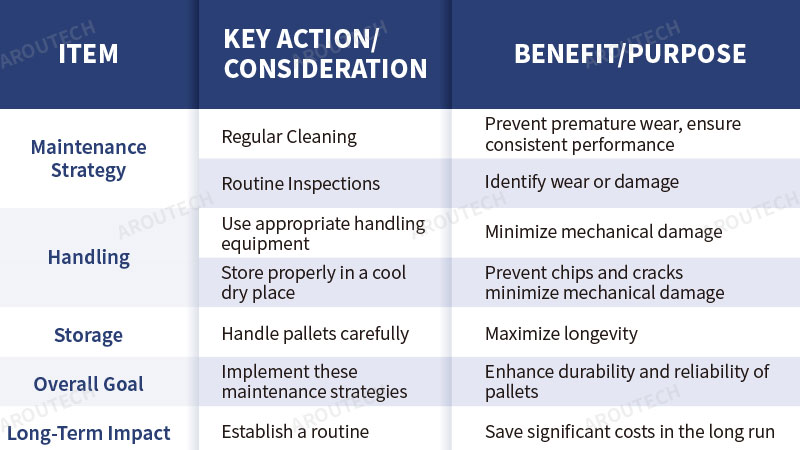
Always handle pallets carefully to minimize mechanical damage. Over time, chips and cracks can develop if they are not handled with care. Using the correct tools for lifting and moving can help prevent such damage. By following these simple maintenance strategies, you can significantly enhance the durability and reliability of your wave soldering pallets.
Innovations and Trends in Wave Solder Pallet Materials: What’s Next?
Have you thought about the future of wave solder pallet materials? The field of wave solder pallet materials is continuously evolving, with manufacturers exploring new materials to meet changing needs. These innovations aim to enhance both performance and cost-effectiveness.
Recent innovations in wave solder pallet materials focus on advanced composite materials for improved thermal and chemical resistance, lighter designs for easier handling, enhanced recyclability, and integrated anti-static features for sensitive environments.
Recent trends specifically focus on improving thermal and chemical resistances, which has led to the development of advanced composite materials. These materials are designed to withstand even higher temperatures and more aggressive chemicals. The preferred supplier needs at the forefront of these developments, continuously innovating to bring new and improved materials to market that address emerging industry needs, such as enhanced sustainability and specialized anti-static properties. By staying informed about these innovations, manufacturers can significantly boost their processes. Adopting these advanced materials can lead to greater efficiency and sustainability within the industry.
Smart Material Choices: Partnering with Suppliers for Wave Solder Pallets?
When selecting wave solder pallet materials, manufacturers should engage with their suppliers to ensure a balance between cost-effectiveness and the availability of sustainable options. It’s crucial to consider the recyclability of materials, as suppliers offering sustainable choices contributes to minimizing the cost of trial and error.
Furthermore, suppliers can provide valuable insights into the lifecycle costs of their materials, helping manufacturers understand the total cost of ownership beyond the initial purchase price. This includes factoring in potential savings from reduced waste disposal, extended pallet lifespan, and streamlined maintenance, all of which can be facilitated by choosing materials recommended by knowledgeable suppliers.
By actively collaborating with suppliers on material selection, manufacturers can leverage their expertise to identify innovative solutions that not only meet performance demands but also contribute to a more resource-efficient and cost-effective operation. This partnership fosters a shared commitment to optimizing both economic and environmental considerations throughout the production lifecycle, ensuring long-term benefits for all stakeholders.
Frequently Asked Questions About Wave Solder Pallet Materials: Your Concerns Addressed?
Do you have lingering questions about wave solder pallet materials? Choosing the right wave solder pallet material can be complex, and many common questions arise during the selection process.
Common questions about wave solder pallet materials include factors for selection (thermal/chemical resistance, cost), how material choice impacts soldering quality, the value of high-quality materials, and available supplier support.
Here are some common questions answered to guide you:
- What factors should I consider when choosing a material? Focus on thermal resistance, chemical resistance, and cost.
- How does material choice affect soldering quality? It directly impacts heat distribution and defect rates.
- Are high-quality wave solder pallet materials worth the investment? Yes, they offer better durability and consistency, leading to long-term savings.
- Is there support available for material selection? Many manufacturers, including Aroutech, provide extensive technical support and customization services to help you make the best choice.
These answers aim to help streamline your decision-making process. Understanding these aspects will enable you to make better choices in material selection for your specific manufacturing needs.
Conclusion: Making the Best Choice for Your Process
Ultimately, selecting the best wave solder pallet material requires a thorough understanding of your unique needs. Evaluate the key properties of each material, including those offered by Aroutech, and align them with your specific process requirements. By carefully considering factors like thermal resistance, cost, and durability, you can ensure efficient and reliable soldering outcomes. Investing time in selecting the right material pays off significantly in the long run, optimizing performance and reducing defects across your production line.
References
- Printed Circuit Board (PCB): Wikipedia contributors. "Printed circuit board." Wikipedia, The Free Encyclopedia.
- Wave Soldering: Wikipedia contributors. "Wave soldering." Wikipedia, The Free Encyclopedia.
- CDM: Isola Group. "CDM." Isola Group Product Page.
- Durostone: Wikipedia contributors. "Durostone." Wikipedia, The Free Encyclopedia.
- Ricocel: Wikipedia contributors. "Ricocel." Wikipedia, The Free Encyclopedia.

